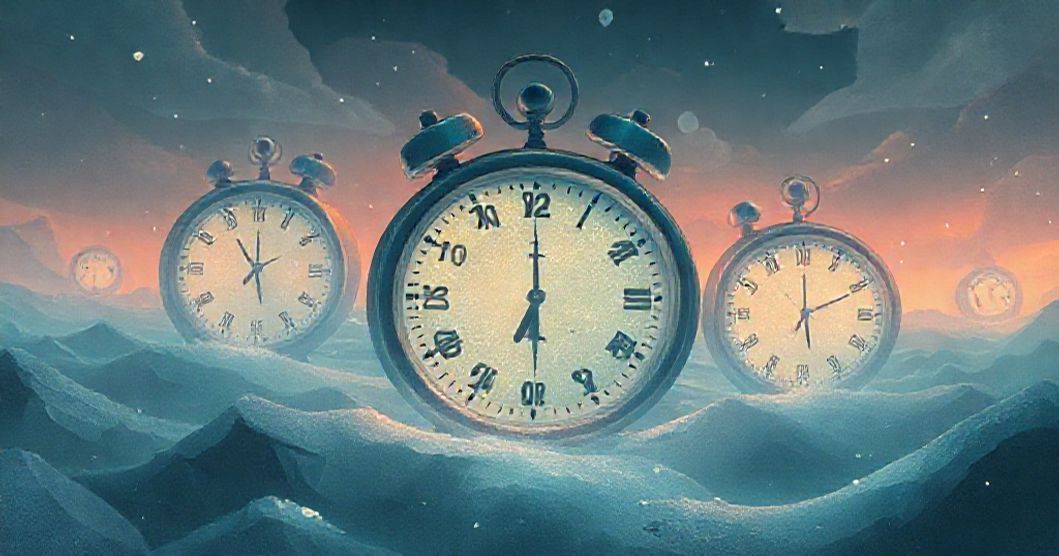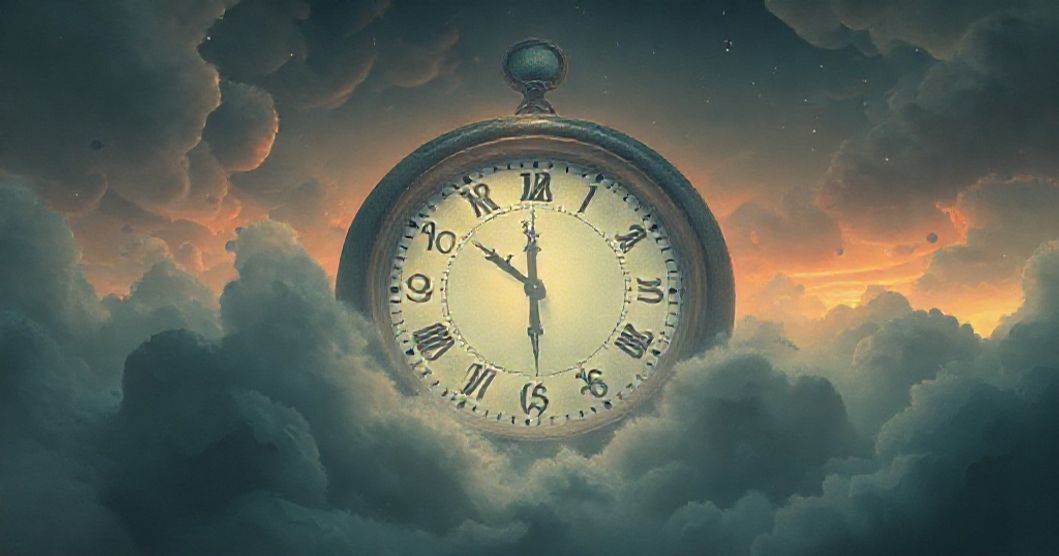Part 1: Dream Presentation
Dreams often arrive unannounced, carrying symbolic messages from our deeper consciousness. Consider this vivid dream experience: the dreamer found themselves wandering through an empty train station—a vast, echoing space where the usual hum of activity had vanished. The platform stretched endlessly before them, concrete cold beneath their feet, and the distant announcements that should have filled the air were replaced by an eerie silence. As they walked, their steps echoing hollowly, they noticed something strange: every clock in the station had frozen. The analog faces, the digital displays—all stopped mid-sweep, their hands suspended in impossible positions. Time itself seemed to have seized. The dream felt profoundly real, so much so that they instinctively searched for answers, their mind racing to make sense of this surreal scene. Later, they discovered an app called RüyaAl, which translates to 'DreamAl' in Turkish—a small, unassuming application that promised to interpret dreams with artificial intelligence. They described the dream in detail: the empty station, the frozen clocks, the overwhelming sense of being trapped in a moment that would not move forward. The app’s response was surprisingly specific: it suggested the dream might reflect feeling 'stuck in time,' a sensation that resonated deeply, as if the dream were peering into an emotional state they’d been avoiding. Intrigued, they found themselves wondering if others here have tried similar AI-based dream interpreters—whether they’ve found them to offer genuine insight or if they’re merely random algorithms regurgitating generic interpretations.
Part 2: Clinical Analysis
Symbolic Landscape: Train Station and Frozen Time
Want a More Personalized Interpretation?
Get your own AI-powered dream analysis tailored specifically to your dream
🔮Try Dream Analysis FreeThe empty train station serves as a powerful symbol of transition and potential. In dream imagery, stations often represent life’s crossroads, moments of decision, or transitions between phases. The emptiness of this station suggests a lack of direction or purpose, a feeling of being adrift in life’s journey. Jungian psychology would view such a space as reflecting the 'collective unconscious'—a realm where archetypal themes of movement, purpose, and transformation manifest. The frozen clocks introduce a more complex layer: clocks universally symbolize time, mortality, and the passage of life. When they freeze, they represent psychological stagnation—the feeling that time is not progressing as desired, or that certain aspects of life have become 'frozen' in place.
The 'stuck in time' interpretation from the AI app aligns with the dream’s core emotional undercurrent. This phrase encapsulates the dreamer’s internal experience of feeling trapped, unable to move forward despite unconscious desires to progress. The frozen clocks visually embody this psychological state: a moment that refuses to shift, a situation that cannot evolve. In Freudian terms, this could represent unresolved conflicts or repressed emotions that have created a barrier to growth, manifesting as a dream of arrested time.
Psychological Perspectives: Multiple Lenses on the Dream
Freud would likely view the dream as a manifestation of repressed anxiety or unfulfilled wishes. The empty station might symbolize a fear of missing opportunities or a sense of isolation in life’s journey, while the frozen clocks could represent the dreamer’s unconscious attempt to 'stop' time to avoid confronting uncomfortable truths. Conversely, Jung’s analytical psychology would emphasize the dream as a communication from the collective unconscious—a message from the 'self' seeking integration and wholeness. The train station, as a transitional space, paired with the frozen time, suggests the dreamer is at a psychological threshold, needing to reconcile past experiences with present reality.
Cognitive neuroscience offers another perspective: dreams as a byproduct of neural activity during sleep, processing emotional memories and consolidating information. The 'stuck in time' theme might reflect the brain’s attempt to process a period of emotional stagnation, creating a symbolic representation of that internal state. In this view, the dream is not a literal prediction but a metaphorical map of the dreamer’s emotional landscape.
Emotional and Life Context: Unpacking the 'Stuck' Experience
The dream’s resonance with the waking world likely stems from unaddressed emotional states or life circumstances. The 'stuck in time' feeling often arises during periods of uncertainty, career transitions, or relationship challenges—situations where the dreamer feels unable to make progress or change. The empty train station could symbolize a lack of clear direction: the dreamer may be in a phase of life where traditional markers of success (or even personal fulfillment) feel absent. The frozen clocks might represent a fear of aging, missed opportunities, or unresolved past events that continue to occupy mental space.
The emotional weight of the dream—its 'super real' quality—indicates that this internal state is significant. The dreamer’s immediate search for meaning through the app suggests a desire for validation of their intuitive sense that something is 'off' in their life. The app’s specific interpretation ('stuck in time') serves as a mirror, reflecting back a truth the dreamer may have been avoiding or unable to articulate consciously.
Therapeutic Insights: Moving Beyond the Frozen Moment
This dream offers several opportunities for self-reflection and growth. First, it invites the dreamer to examine areas of their life where they feel 'frozen'—perhaps in relationships, career, or personal goals. Journaling exercises could help map these areas: listing situations where progress feels blocked and identifying underlying emotions (fear, anxiety, or perfectionism) that might be causing the stagnation.
Mindfulness practices could also be beneficial, particularly exercises focusing on time perception. By grounding themselves in the present moment and acknowledging the fluidity of time, the dreamer can begin to release the grip of the 'stuck' feeling. This might involve daily practices of noticing and appreciating the passage of time, both in small moments and larger life transitions.
For those who resonate with AI dream interpretation tools, they can serve as starting points for reflection rather than definitive answers. The app’s 'stuck in time' insight is a prompt to explore deeper questions: What specific areas of life feel stagnant? What emotions arise when considering change? How might the dreamer reorient themselves toward forward movement, even in small ways?
FAQ Section
Q: How can I distinguish between a meaningful dream symbol and a random association?
A: Meaningful symbols feel emotionally resonant and connect to recurring themes in your life. If an interpretation aligns with current stressors or unmet needs, it’s more likely significant than generic 'advice.'
Q: Does 'stuck in time' always indicate emotional stagnation?
A: While often linked to feeling trapped, it can also represent spiritual or creative blocks, or a need to honor past experiences before moving forward. Journaling helps clarify which area(s) feel frozen.
Q: Are AI dream interpreters helpful, or are they just a novelty?
A: They can be useful as conversation starters, but rely on your own intuition. AI lacks personal context, so treat interpretations as prompts for self-discovery, not definitive truths.


